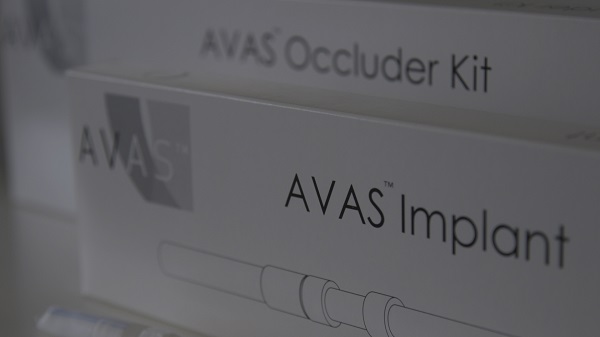Why stopping blood flow could transform cancer treatment
In 2005, vascular surgeon Dr Rodney Lane had an idea for how to increase blood flow to patients’ extremities, with the aim of preventing limb amputations. Working at Royal North Shore Hospital in Sydney, Australia, he developed an arterial implant, AVAS, to do just that. The device saved multiple limbs from amputation and when he mentioned it to his colleagues, they spotted another potential use: what if you could use the device to shut off blood flow instead, and potentially revolutionise cancer care?
Liver cancer is one of the hardest conditions to treat in medicine. While it’s the sixth most common type of cancer, it’s the second most common cause of death, with five-year survival rates as low as 20%. The big challenge is getting chemotherapy to the organ without causing side effects around the rest of the body.

“There have been lots of advances in the drugs used, but no one was looking at the actual delivery of chemotherapy,” explains David Radford, CEO of AllVascular, the company aiming to take AVAS to market. “The oncology team basically said [to Lane] look, with this device we can put in catheters, isolate an organ and infuse chemotherapy directly into the affected organ.”
The idea behind Lane’s redesigned AVAS is simple. The device is implanted into a patient’s side and attached directly to an artery. From here, 3 catheters with balloons on the end can be inserted into the main arteries controlling blood flow to a target organ – such as the liver. When the balloons are inflated, the blood supply is effectively shut off from the organ for the duration of treatment, usually about 20 min. This means when a chemotherapy treatment such as oxaliplatin is injected, it doesn’t get washed around the body indiscriminately. It stays exactly where it’s needed, and this limits side effects that can include nausea, mouth sores and numbness in the hands and feet.
“It’s like dunking a bath sponge in a bucket of water,” Radford says. “The liver is soaking up the chemotherapy, so you’re getting a much deeper penetration, and a higher delivered concentration to the organ. And because it’s controlled within that micro-environment, you’re not getting as many side effects.”
Once the chemotherapy infusion is complete, the balloons are deflated, restoring normal blood flow to the organ and flushing any residual drug away. “You’ve got a controlled delivery, controlled side effects, and you’re able to deliver a higher effective dose to the target cells.”
Although its operation is straightforward, the design of the AVAS device is sophisticated, Radford says. Usually, long-term access to an artery is tricky and can affect blood flow. “The real smarts is the design of the implant itself, which has a chamfered tip that’s smoothly aligned to artery walls, allowing it to sit flush to the artery.” This allows the device to stay in place so multiple treatments can be administered through the AVAS and cut down treatment times, which means greater convenience for patients and an improved quality of life.
AVAS has seen success in early trials. “We have been treating patients who have either failed or not responded to chemotherapy,” Radford says. “In the initial study at Macquarie Private Hospital, in conjunction with the oncology team at Royal North Shore, we found that six of the 10 patients demonstrated a clinical benefit, and in three, the tumour was stabilised. That meant they could take a break from chemotherapy, which is very positive for quality of life. Two of the patients survived for four-and-a-half and five-and-a-half years after treatment, when they were literally given months.”
Unfortunately, the COVID-19 pandemic has slowed the recruitment of patients, but the AVAS team is still planning to open up another three centres using the device across New South Wales. The team is also considering other hard-to-target aggressive cancers where patients could benefit from the device.
“We believe that targeted delivery and isolation of the organ could make a quantum shift in the treatment of pancreatic cancer and cholangiocarcinoma [bile duct cancer],” Radford says. “We’ve also got interventional radiologists saying that you could put microcatheters into the brain and deliver chemotherapy there, and we’re looking at aggressive therapies for prostate or cervical cancer too.”
That means, if AVAS lives up to its promise, it could improve the lives of patients with a range of advanced cancers around the world. “It’s early days,” Radford adds, “but oncologists are excited. This could change the way they work.”
Updated 4 years ago